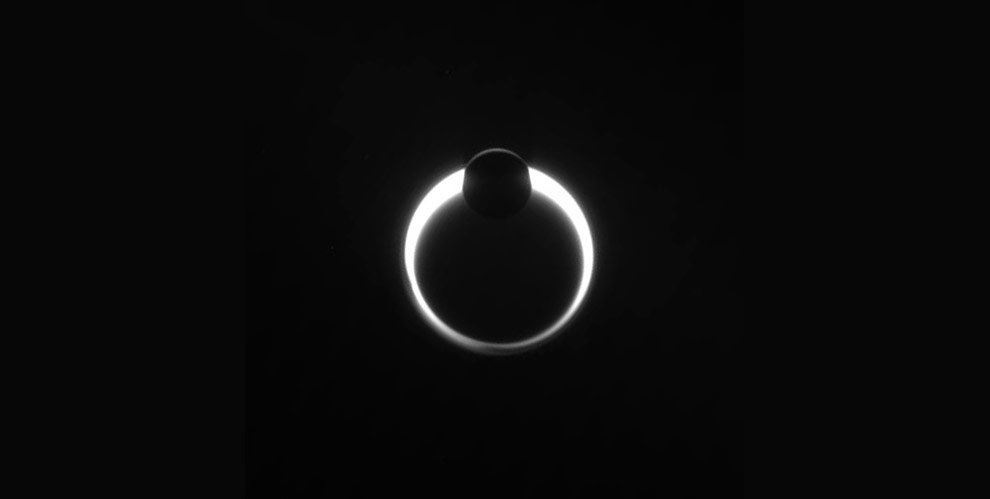Not at all meant as a “gotcha” at all… but I just love when I take the time to clean these up and people start using these my clean-ups over the ones officially released. Daily Galaxy posted my Comet Halley clean up and I knew I recognized it as my handy work. They most likely got it off Google image search.
Enceladus: All In One View
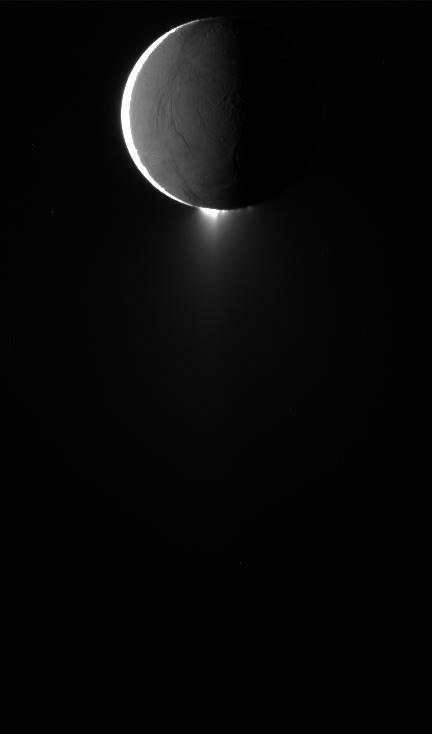 Seen in this image are Enceladian surface features and it’s geysers in action. This is normally not possible as the geysers are not normally visible unless they are back-lit… which they are in this image. The difference is that the surface details of Enceladus are being lit by an additional light source: Saturnshine. This makes for a fairly rare view where both details can be seen in one view.
Seen in this image are Enceladian surface features and it’s geysers in action. This is normally not possible as the geysers are not normally visible unless they are back-lit… which they are in this image. The difference is that the surface details of Enceladus are being lit by an additional light source: Saturnshine. This makes for a fairly rare view where both details can be seen in one view.
50 Years of Space Exploration Map
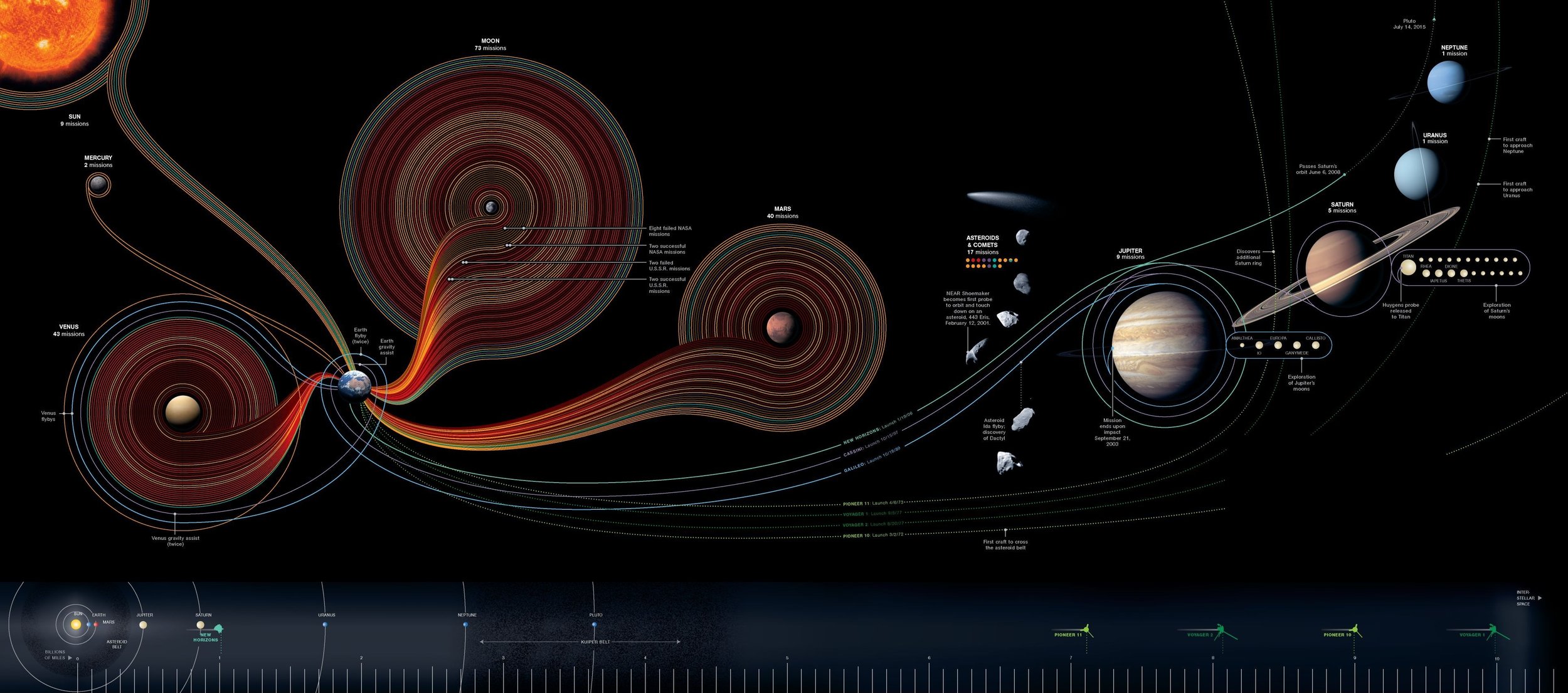 This is so nice, but I am furious that I didn’t get to design this. This is Information design at it’s best naturally by National Geographic. You can see 50 years of robotic planetary exploration at a glance. It even includes failed missions represented by darker desaturated lines. As far as I can tell the cream colored lines are US and the red ones are Soviet. Interesting to see how many of those lines go dark around Mars.
This is so nice, but I am furious that I didn’t get to design this. This is Information design at it’s best naturally by National Geographic. You can see 50 years of robotic planetary exploration at a glance. It even includes failed missions represented by darker desaturated lines. As far as I can tell the cream colored lines are US and the red ones are Soviet. Interesting to see how many of those lines go dark around Mars.
Now where does one purchase such a thing? Perhaps this month’s issue of NG? Here is the link to it on their site complete with zoom viewer and them some kind samaritan posted a hires version to flickr.
A Saturnian Aurora Captured
 Astro0 (a contributor to unmannedspaceflight.com) had been looking through a 159 frame set of images that showed a tiny portion of Saturn's sunlit limb. He animated it just to see the effect and happened upon a pretty nice animation of a Saturnian aurora (click here for the animation). Which is likely the first time we are seeing an aurora on another world so clearly animated.
Astro0 (a contributor to unmannedspaceflight.com) had been looking through a 159 frame set of images that showed a tiny portion of Saturn's sunlit limb. He animated it just to see the effect and happened upon a pretty nice animation of a Saturnian aurora (click here for the animation). Which is likely the first time we are seeing an aurora on another world so clearly animated.
To be clear… the spots that stand still in the animation are artifacts of the images. The streaks are stars seemingly flying by due to Cassini’s cameras being trained on one spot as it and Saturn itself are moving through space. Astro0’s blog can be found here and I suspect will soon feature a post with more details on the animation in the very near future.
Messenger’s Third
 Messenger passed by Mercury for a third and final time before it’s orbit insertion in 2011. It entered safe mode during this swing and lost a bunch of science, but the loss is merely one of time as Messenger’s long-term mission will surely cover anything missed this time around.
Messenger passed by Mercury for a third and final time before it’s orbit insertion in 2011. It entered safe mode during this swing and lost a bunch of science, but the loss is merely one of time as Messenger’s long-term mission will surely cover anything missed this time around.
Saturnati XXIII
 Image by Gordan Ugarkovic.
Image by Gordan Ugarkovic.
Galilean Family Portrait
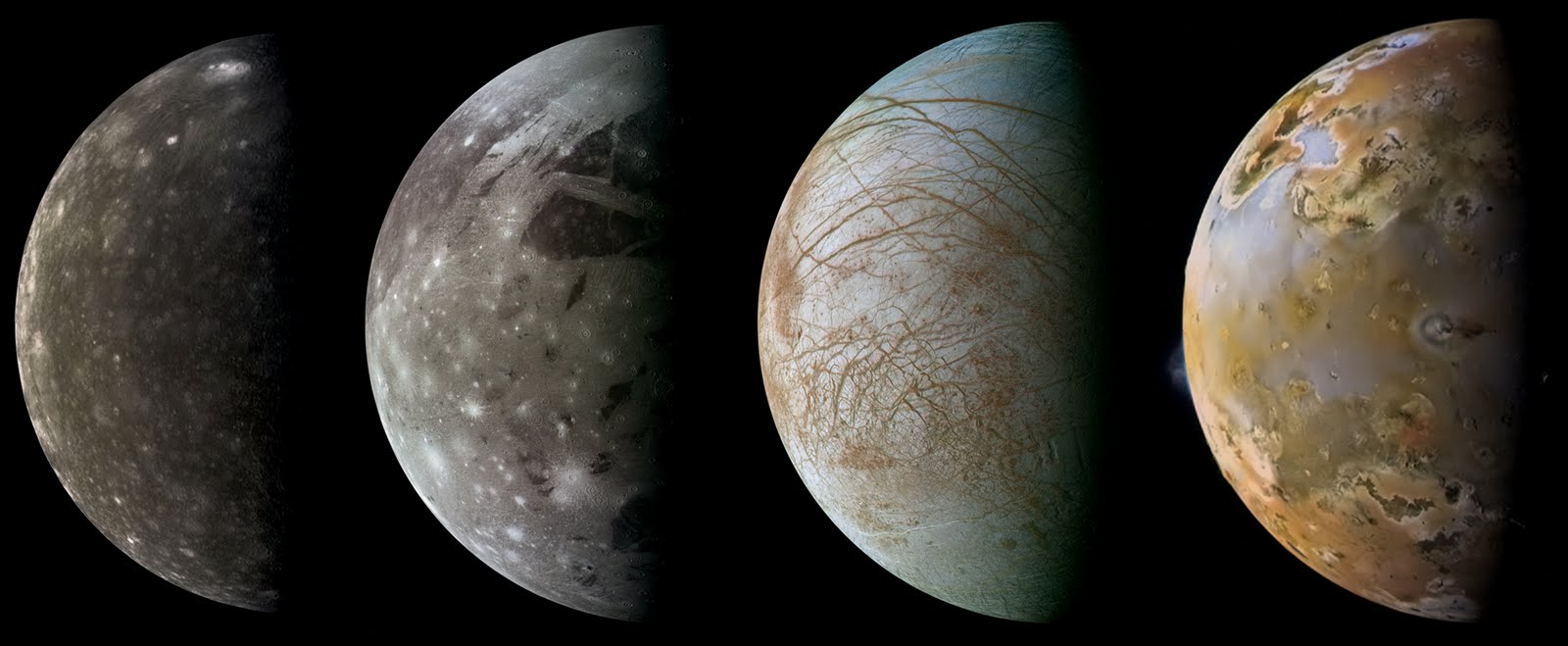 I usually do not go for montages of planets for a variety of reasons, but this family portrait of the 4 Galilean moons of Jupiter is quite gorgeous. They are easily the most fascinating and beautiful bodies of our system of worlds, save for perhaps Saturn and its rings.
I usually do not go for montages of planets for a variety of reasons, but this family portrait of the 4 Galilean moons of Jupiter is quite gorgeous. They are easily the most fascinating and beautiful bodies of our system of worlds, save for perhaps Saturn and its rings.
Another work of art by Ted Stryk whose old blog Planetary Images from Then and Now has come back from the dead with vigor!
Is There Water on the Moon?
 I was away in California for a wedding and my fellow designerds at The Chopping Block made this funny little site (seen above) so people can make the announcement to their friends… or if anyone forgets and needs to be reminded. If you want to be more scholarly about this, the official NASA announcement is here.
I was away in California for a wedding and my fellow designerds at The Chopping Block made this funny little site (seen above) so people can make the announcement to their friends… or if anyone forgets and needs to be reminded. If you want to be more scholarly about this, the official NASA announcement is here.
What makes the discovery more exciting is that the process by which the water exists on our moon means that it likely also exists on other similarly dry bodies like Mercury and the countless asteroids in the Asteroid Belt between Mars and Jupiter.
The Enterprise Emerges From Titan
 Nice example of science meets Hollywood.
Nice example of science meets Hollywood.
Partial Eclipse of Titan
Saturn at Equinox
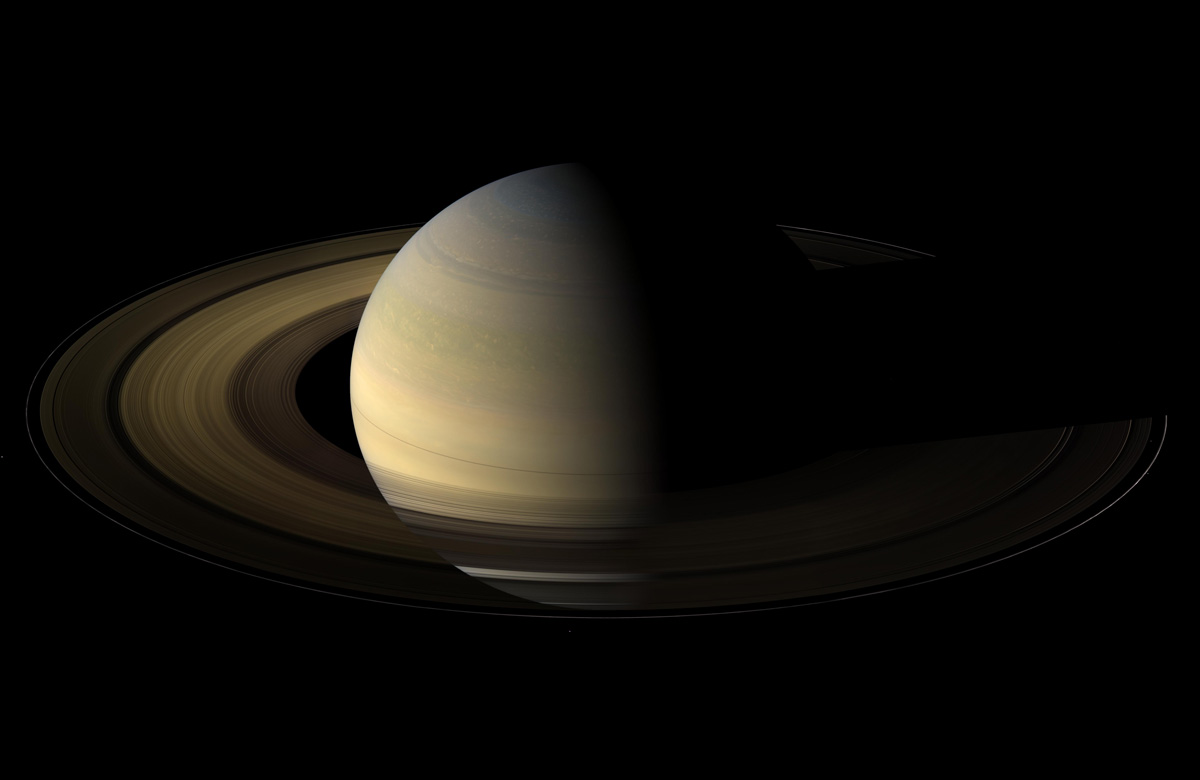 An official NASA image released of Saturn at equinox. You can only see Saturn like this approximately every 15 Earth years as it takes Saturn that long to reach a point in it’s orbit where the ring plane is directly aligned with the sun light. Turning the usually dramatic ring shadows that are cast along Saturn’s cloud tops into a thin black line running around it’s globe.
An official NASA image released of Saturn at equinox. You can only see Saturn like this approximately every 15 Earth years as it takes Saturn that long to reach a point in it’s orbit where the ring plane is directly aligned with the sun light. Turning the usually dramatic ring shadows that are cast along Saturn’s cloud tops into a thin black line running around it’s globe.
This composite took 75 separate images of Saturn to complete the full hires version seen here at planetary.org.
Stryk Blog Is Back
 Ted loves to re-work old data sets from older missions with today’s technology. Often the results are visually beautiful and put a new face on old encounters, but occasionally this work also finds new items not seen the first time around. Above is a set of images of Neptune compiled to reveal that Voyager managed to capture the transit of one of its very small moons, Despina, across its face. This was a detail not previously seen until the data was re-worked by Ted.
Ted loves to re-work old data sets from older missions with today’s technology. Often the results are visually beautiful and put a new face on old encounters, but occasionally this work also finds new items not seen the first time around. Above is a set of images of Neptune compiled to reveal that Voyager managed to capture the transit of one of its very small moons, Despina, across its face. This was a detail not previously seen until the data was re-worked by Ted.
He is back at updating his blog planetimages.blogspot.com and there are more images to come as some of the posts provide some great opportunities to update our “portrait” series of images. These are images that are tagged as such which feature the best global images of each major body in our Solar System.
Apollo 12 and Surveyor 3
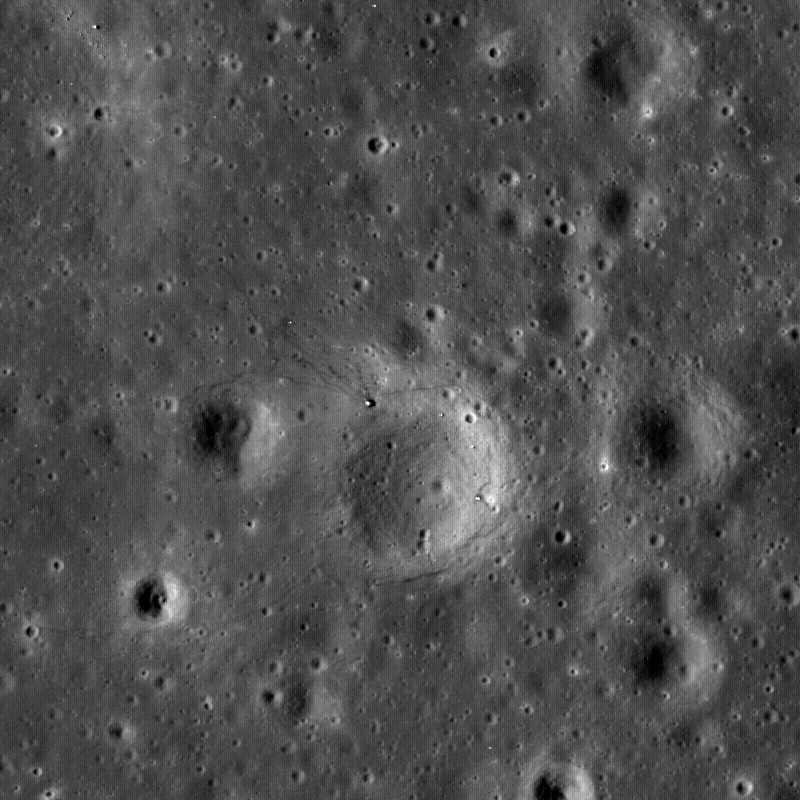 This image was taken by LRO of the Apollo 12 landing site. Since Apollo 11 already achieved the objective of landing a man on the surface of the moon and returning him safely to home, one of the main objectives of Apollo 12 was to show landing precision. They did this by selecting the resting place of Surveyor 3 as the area they would like to touch-down and did so impressively by touching down only 200 feet away from the robotic lander. You can therefore see the Intrepid Lander, Surveyor 3, the LDEP experiment as well as a good amount of foot traffic left behind by astronaut feet.
This image was taken by LRO of the Apollo 12 landing site. Since Apollo 11 already achieved the objective of landing a man on the surface of the moon and returning him safely to home, one of the main objectives of Apollo 12 was to show landing precision. They did this by selecting the resting place of Surveyor 3 as the area they would like to touch-down and did so impressively by touching down only 200 feet away from the robotic lander. You can therefore see the Intrepid Lander, Surveyor 3, the LDEP experiment as well as a good amount of foot traffic left behind by astronaut feet.
Be sure to click on the image for the full size to see all the detail.
Saturnati XXII
 Emily Lakdawalla recently posted some images from the Cassini raw image database and I noticed that she had posted 2 similar images taken the same day. One had Saturn’s disc over exposed and the other had Saturn exposed much better with the rings too dark and lacking detail. These crescent images often make it difficult for Cassini’s cameras to get a single exposure with both elements with proper exposure because Saturn’s disk is so much brighter than the back-lit rings.
Emily Lakdawalla recently posted some images from the Cassini raw image database and I noticed that she had posted 2 similar images taken the same day. One had Saturn’s disc over exposed and the other had Saturn exposed much better with the rings too dark and lacking detail. These crescent images often make it difficult for Cassini’s cameras to get a single exposure with both elements with proper exposure because Saturn’s disk is so much brighter than the back-lit rings.
So i retrieved the images from the same day, recompiled them, did a little manual color balancing based on one of Gordan Ugarkovic’s recent crescent Saturn images and finally merged the two elements together. So, in reality the rings were taken at a slightly different time than Saturn’s disc was. However, since Cassini takes it’s color images one filter at a time (red, green and then blue), that is really true of any color image compiled from the mission database.
Also visible in the image is a small crescent Tethys and Titan’s shadow on the cloud tops.
Rhea Flyby Animation
 Another Gordan Ugarkovic. It never ends!
Another Gordan Ugarkovic. It never ends!
Jupiter Slammed Again
 Barely 15 years after Comet Shoemaker-Levy slammed into Jupiter, another large object hit Jupiter this month when nobody was looking. This image was taken 4 days after the event and displays an Earth-sized scar in the upper atmosphere of the planet. The object that did the slamming is estimated to have been about the size of several football fields. This should be a fairly rare event, although twice in 15 years is literally a blip on a celestial time scale.
Barely 15 years after Comet Shoemaker-Levy slammed into Jupiter, another large object hit Jupiter this month when nobody was looking. This image was taken 4 days after the event and displays an Earth-sized scar in the upper atmosphere of the planet. The object that did the slamming is estimated to have been about the size of several football fields. This should be a fairly rare event, although twice in 15 years is literally a blip on a celestial time scale.
Chopping Block’s Tribute to Apollo (Circa 1998)
 Not as long ago as 40 years ago, but just a little over 10 years ago – The Chopping Block adopted the look of NASA
Not as long ago as 40 years ago, but just a little over 10 years ago – The Chopping Block adopted the look of NASA 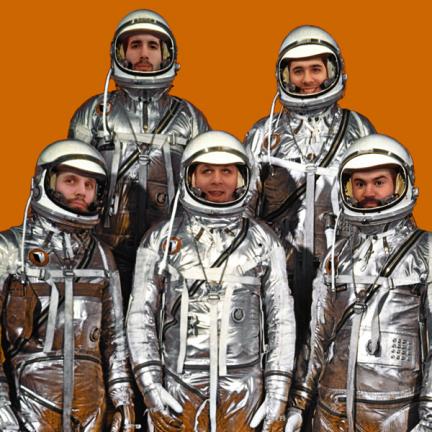 for one of our online incarnations. More specific our adopted look embraced the era of Apollo in hopes that a little of that former astro-glory might rub off on our small New York graphic design studio which was at that time only about a year old. So we thought it appropriate on this 40th anniversary of the touchdown at Tranquility Base, that we revisit our own journey through cyberspace and our small tribute to the historic landmark that is Apollo.
for one of our online incarnations. More specific our adopted look embraced the era of Apollo in hopes that a little of that former astro-glory might rub off on our small New York graphic design studio which was at that time only about a year old. So we thought it appropriate on this 40th anniversary of the touchdown at Tranquility Base, that we revisit our own journey through cyberspace and our small tribute to the historic landmark that is Apollo.
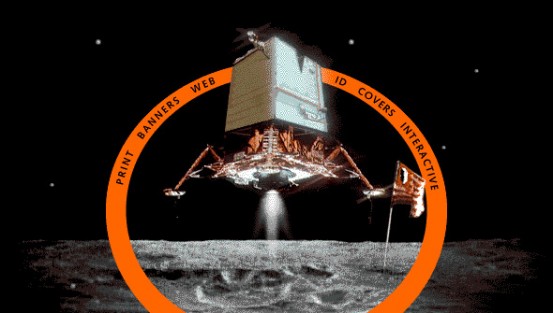 If there is one thing we like to do at The Chopping Block, it is to take our logo and make it look like something else. In this case, we became quite possibly the first design company to ever merge the design of the Apollo Lunar Excursion Module with their own logo mark. Thusly, resulting in the world’s first merging of state-of-the-art of 196o’s technology with early web identity design.
If there is one thing we like to do at The Chopping Block, it is to take our logo and make it look like something else. In this case, we became quite possibly the first design company to ever merge the design of the Apollo Lunar Excursion Module with their own logo mark. Thusly, resulting in the world’s first merging of state-of-the-art of 196o’s technology with early web identity design.
 And what fake space exploration site would be complete without fake astronaut training pix?
And what fake space exploration site would be complete without fake astronaut training pix?
See the original site as it appeared in 1998 here. Also see our current site choppingblock.com for more recent projects.
Saturnati XXI
 Another by Gordan Ugarkovic.
Another by Gordan Ugarkovic.
Mariner 10 Re-Imaging of Venus
 Been meaning to catch up on a few odds and ends lying around. This image of Venus was re-worked from Mariner 10 images by Mattias Malmer somewhere around 2005. It is an attempt at showing Venus in natural light and is far better than the version previously used as our “portrait” image for Venus. The issue is that Mariner 10 images only allow one to do that by taking some liberties with UV data. According to Malmer, “I think that if I were to make an even blander version of the this image it would be close enough to reality”.
Been meaning to catch up on a few odds and ends lying around. This image of Venus was re-worked from Mariner 10 images by Mattias Malmer somewhere around 2005. It is an attempt at showing Venus in natural light and is far better than the version previously used as our “portrait” image for Venus. The issue is that Mariner 10 images only allow one to do that by taking some liberties with UV data. According to Malmer, “I think that if I were to make an even blander version of the this image it would be close enough to reality”.
See the original 2005 post on unmannedspaceflight.com where you can get this image at 4000x4000 resolution. Time for a wallpaper update.
Tweets of Apollo
 You can also follow the mission in real-time as history played out 40 years ago on twitter. Follow Mission Control, The Spacecraft or The Lunur Excursion Module (Eagle). The Eagle will not have much to say, obviously, until it is actually descending toward the surface of the moon on Monday, but it has just started making some noise on Sunday night.
You can also follow the mission in real-time as history played out 40 years ago on twitter. Follow Mission Control, The Spacecraft or The Lunur Excursion Module (Eagle). The Eagle will not have much to say, obviously, until it is actually descending toward the surface of the moon on Monday, but it has just started making some noise on Sunday night.
